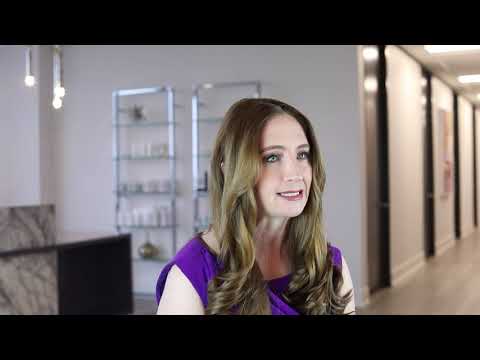Soft tissue fillers (also called dermal fillers) are a very popular treatment among men and women of all ages. At my facial plastic surgery practice in Houston, I use many different types of injectable fillers to volumize areas of a patient’s face or diminish the appearance of wrinkles, creases, fine lines, and even acne scars. The expert application of fillers can be a more cost-effective alternative to cosmetic surgery, giving patients immediate results with no recovery downtime. While results aren’t permanent, some of the newest fillers can last up to two years or more. And many patients find that as time goes on, they need fewer maintenance injections or less filler to achieve the desired results. Below, I give an overview of the various types of soft tissue fillers, how they are used, and what patients can expect. 
What are soft tissue fillers?
Soft tissue fillers are FDA-approved gel-like substances that are injected under the skin to help fill in wrinkles or enhance facial volume in key areas. As we age, we naturally lose collagen and adipose tissue (fat) in our face. This can cause the formation of wrinkles, fine lines, or facial depressions. Cheeks may come to appear more “hollow,” the lower face may start to sag, and lips begin to thin out and form lines around them. Fillers can be injected into these areas to plump them up and/or stimulate natural collagen production. Common injection sites for fillers are the cheeks, lips, nasolabial folds, and “marionette lines” below the corners of the mouth..
What are hyaluronic acid fillers?
Hyaluronic acid fillers are the most commonly-used types of fillers on the market. Since hyaluronic acid is found naturally throughout the human body, these fillers are very safe and effective, yielding immediate and often dramatic results. Some hyaluronic acid fillers I use in my practice are:
- Juvederm: Lasts 6-12 months; used in lips, cheeks, and to fill in lower facial lines
- Restylane: Lasts 9-12 months; used in lips, cheeks, and to fill in lower facial lines
- Restylane Silk: Lasts 9-12 months; used more superficially, especially to fill in fine vertical lines around the border of the lips
- Juvederm Voluma: Lasts up to 2 years; often used to volumize the cheeks
- Restylane Lyft: Lasts up to 2 years; often used to volumize the cheeks
- Revance RHA 2: Lasts 15 months; used to fill fine vertical lines and around the border of the lips
- Revance RHA3: Lasts 15 months: used to fill lips, cheeks and lower facial lines
- Revance RHA4: Lasts 15 months: often used to volumize cheeks and jawline
What are calcium hydroxyapetite fillers?
Radiesse is a calcium hydroxyapetite filler made of calcium and phosphate ions, which are naturally occurring in the human body. Calcium hydroxyapetite fillers are best for especially deep wrinkles and creases in the lower face, because the substance mimics connective tissue. Results show up right away, and last for roughly 12-18 months. An added benefit of Radiesse is that it prompts your body to create more of its own collagen in the treated area, so most clients find that they need repeat injections less frequently over time, and/or less of the actual product when they do.
What are collagen stimulating fillers?
Collagen-stimulating fillers are made of poly-L-lactic acid, which works deep within the dermis to help facial tissue restore its own structure and firmness. Results appear gradually, as the body replenishes its own collagen stores at the injection site. Collagen-stimulating fillers like Sculptra Aesthetic are commonly used to fill in nasolabial folds (or “smile lines”), marionette lines, and chin wrinkles. Sculptra Aesthetic can last two years or more, and results can be maintained with repeat injections after initial treatment. Generally, patients will need about 3 treatments spaced a couple of months apart to achieve maximum results.
How much do soft tissue fillers cost?
The cost of soft tissue fillers will depend on the type of filler you use, how much of it is needed, the expertise level of your practitioner. Price ranges also vary a bit depending on which part of the country you live in. When you call to make an appointment with your doctor, you can ask for a general estimate. You will get a more detailed estimate after your doctor examines you prior to the procedure. It’s hard to give exact figures, because different patients need different amounts of filler, and each brand name includes different varieties of the product for different applications. The price of fillers is per syringe, and does not include provider fees. But some general quotes based on national averages are:
- Juvederm: $600 – $1,500 per syringe (with Juvederm Voluma being the most expensive)
- Restylane: $500 – $800 per syringe
- Revance: $500-900
- Belotero: $500 – $800 per syringe
- Radiesse:$700 – $900 per syringe
- Sculptra Aesthetic: $800 – $1,100 per syringe.
Can I get Botox and filler at the same time?
Yes, you can absolutely get Botox and filler at the same time, and it often makes sense to do so. Filler is most often used to correct signs of aging on the lower two-thirds of the face, while Botox is used more on the upper third of the face — though it may also be used to subtly lift the upper lip or tip of the nose. The two methods work differently. Botox reduces the appearance of wrinkles by paralyzing the surrounding facial muscles. Fillers reduce the appearance of wrinkles or lax skin by plumping up the underlying tissue. For comprehensive facial rejuvenation, Botox can be used alongside soft tissue fillers to address all areas of cosmetic concern.
What are the risks of soft tissue fillers?
Soft tissue fillers carry very few serious risks, because the procedure is minimally-invasive and products are made from biocompatible substances. But this is assuming that a qualified healthcare provider is performing the injection. In recent years, the number of facial filler providers has exploded, and many of these providers do not have adequate knowledge of facial anatomy and aesthetics. If filler is injected into blood vessels, it can result in tissue death and even blindness. This is extremely rare, but it has happened.
Ideally, fillers should be injected by a facial plastic surgeon in a sterile office setting. I strongly advise against getting fillers injected at a salon or promotional “filler party,” as the risk of poor aesthetic results, infection, or scarring may be higher in these scenarios. Unfortunately, I have fixed numerous “botched” filler jobs by unskilled practitioners, and I always feel for the patient who believed they were in good hands. Fortunately, if the filler was a hyaluronic acid filler like Juvederm or Restylane, a substance called hyaluronidase can be injected to help dissolve it. Some of the most common issues I correct are asymmetry, visible lumps or bumps, and excessive augmentation.
Do soft tissue fillers hurt?
Most people experience only mild pressure and slight stinging when getting facial fillers. Many products come with lidocaine to numb the site as the filler goes in. Some practitioners use ice or topical anesthetics to further desensitize the area prior to injection. If you are especially anxious or your procedure is extensive, a full dental block is sometimes used. If you are needle-phobic or concerned about pain, be open and honest with your doctor, as they are likely able to make accommodations for you.
What is the recovery time after facial fillers?
One of the biggest advantages of dermal fillers is that they are quick and easy, and require virtually no recovery time. With most fillers, results are visible right away, but may take 10-14 days to finalize after initial swelling has gone down. Patients can usually resume normal activity right away, though strenuous physical activity should be avoided for a day or two. Slight bruising, redness, and swelling are to be expected at the injection site, but should resolve within a week, and can often be hidden with makeup. Applying ice can help minimize these symptoms. Just to be safe, I always advise patients to get filler at least two weeks before an important event or photo session.
Do I need a soft tissue filler plastic surgeon near me?
If you are in the Houston area, or interested in traveling for expert soft tissue filler treatment, please reach out to my office to discuss your options. I’m proud to be one of the most award-winning facial cosmetic and plastic surgeons in the country, and am even known internationally for my pioneering work and research in facial aesthetic procedures. It is not uncommon for my patients to fly in from elsewhere to have me perform their surgery or treatment, and I warmly welcome patients of all ages, genders, and ethnic backgrounds. Our caring and responsive office staff are always happy to hear from you and answer any questions you may have, so please never hesitate to call us!
Have questions? I’d love to help.
Call me at (281) 336-9300
Read More
How Long Do Soft Tissue Fillers Last?
The Truth About Juvederm
What Is the Best Juvederm for Lips?
About Dr. Angela Sturm
Dr. Angela Sturm is a double-board certified facial plastic surgeon with certifications with the American Board of Otolaryngology – Head and Neck Surgery and the American Board of Facial Plastic Surgery. Dr. Sturm’s meticulous nature makes for exceptional results and satisfied patients. Dr. Sturm was named Texas Monthly’s Super Doctors Rising Star in 2016-2017, Texas Monthly’s Super Doctor in 2018-2019, H Texas Magazine’s Top Doc in 2013-2018, Top Doc by Houstonia magazine in 2016-2018, Houston Business Journal’s People on the Move and 40 under 40, Blazing Star Award by Texas Women’s Chamber of Commerce, Top Women in Business, one of the Top 30 Influential Women of Houston, Best Female Cosmetic Surgeon in Out Smart, and given the Patients’ Choice Award, On Time Doctor Award and Compassionate Doctor Award by Vitals.com.


